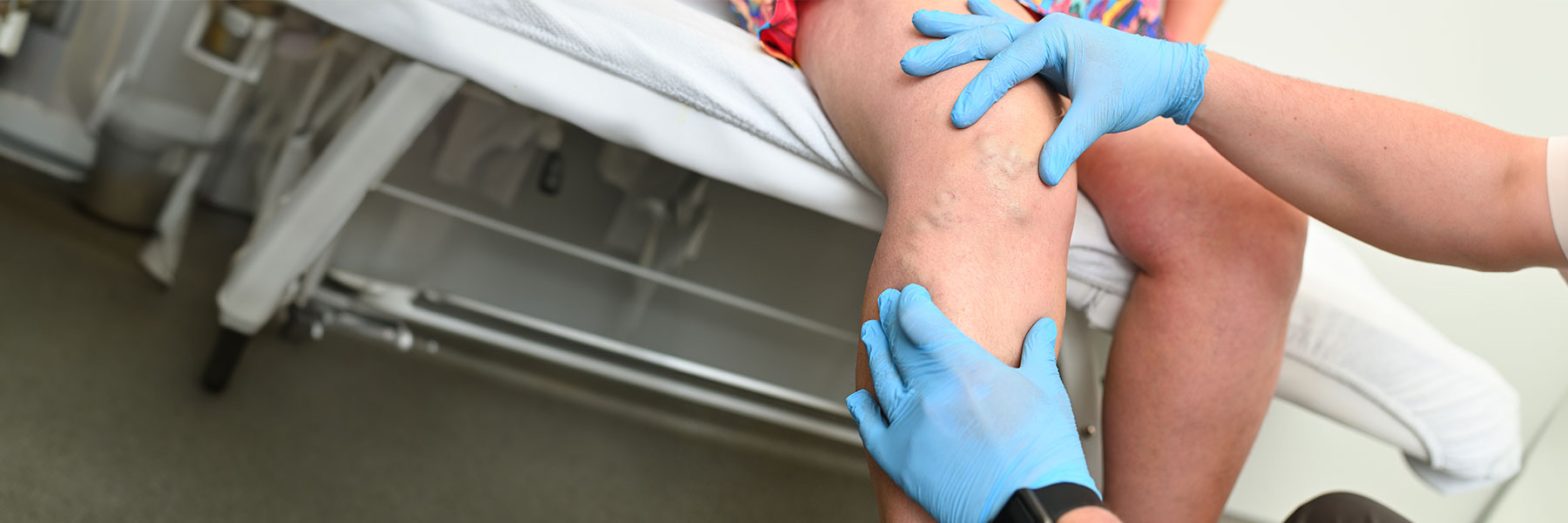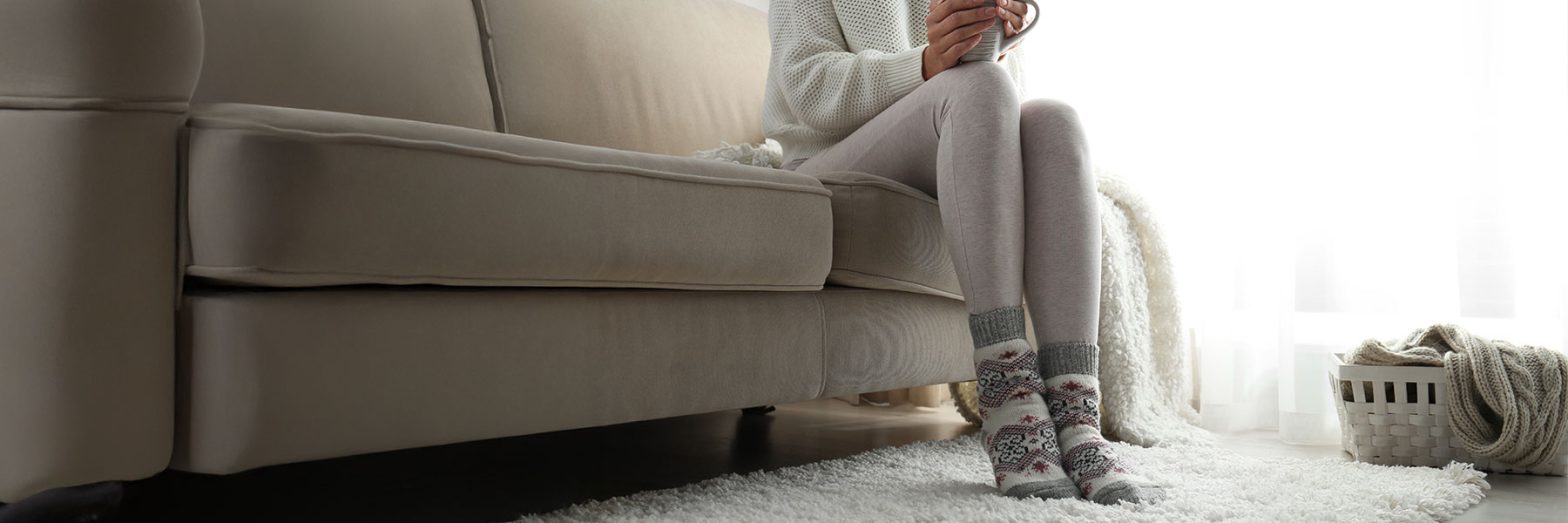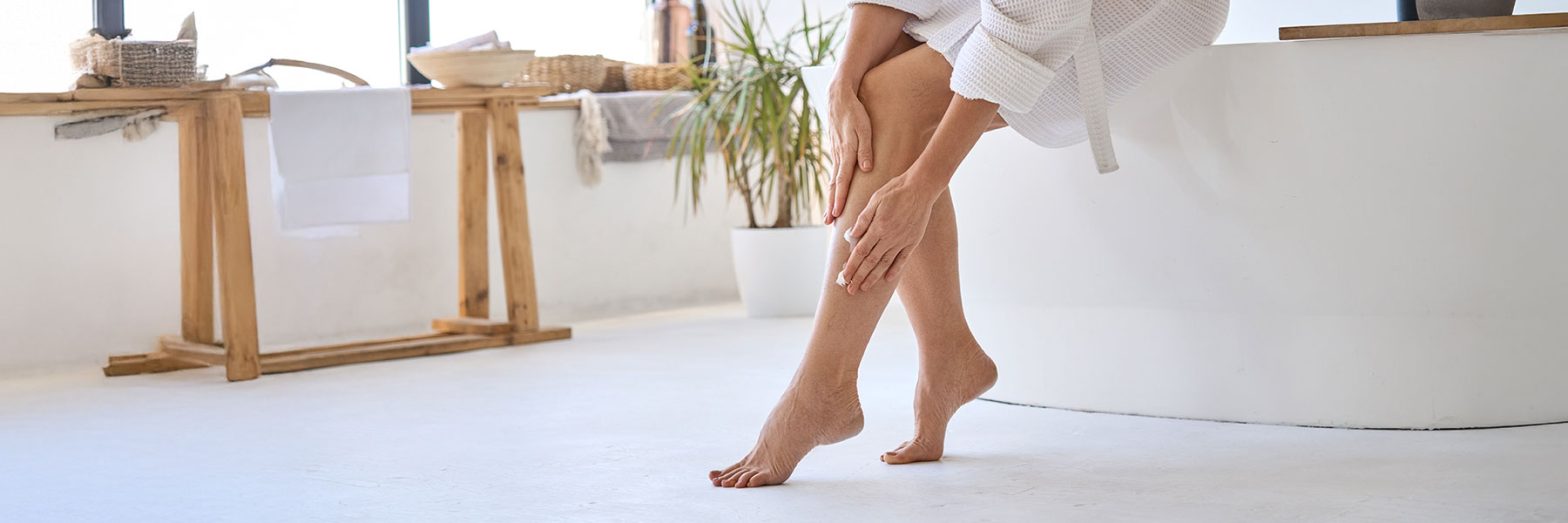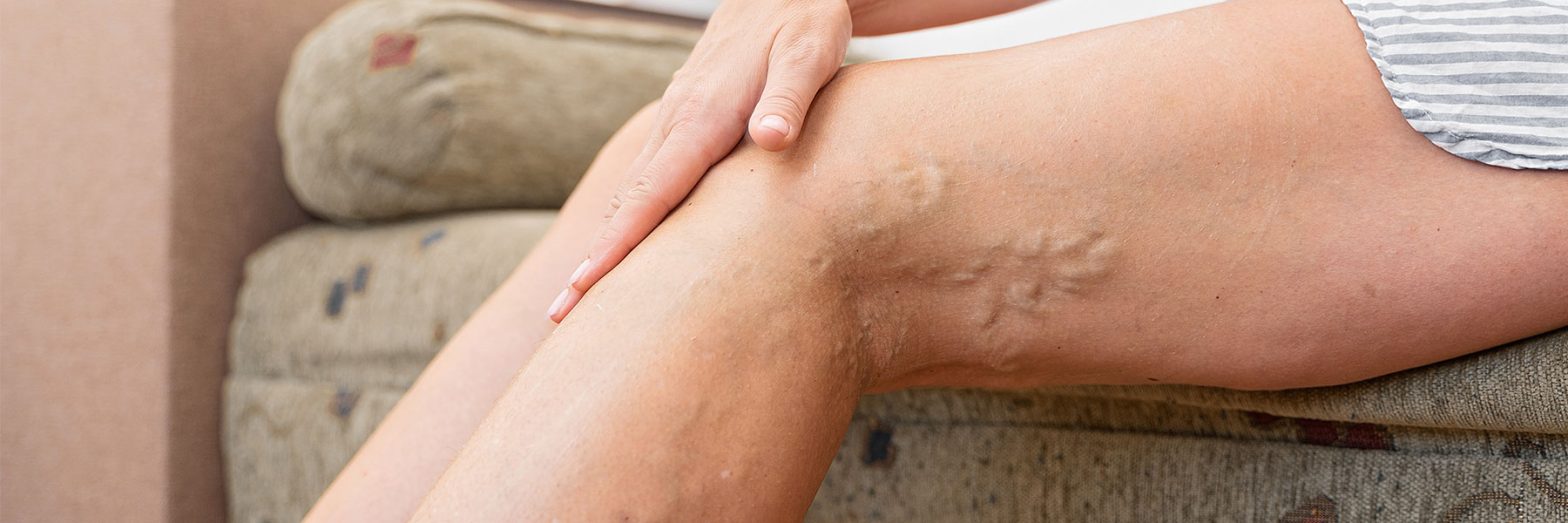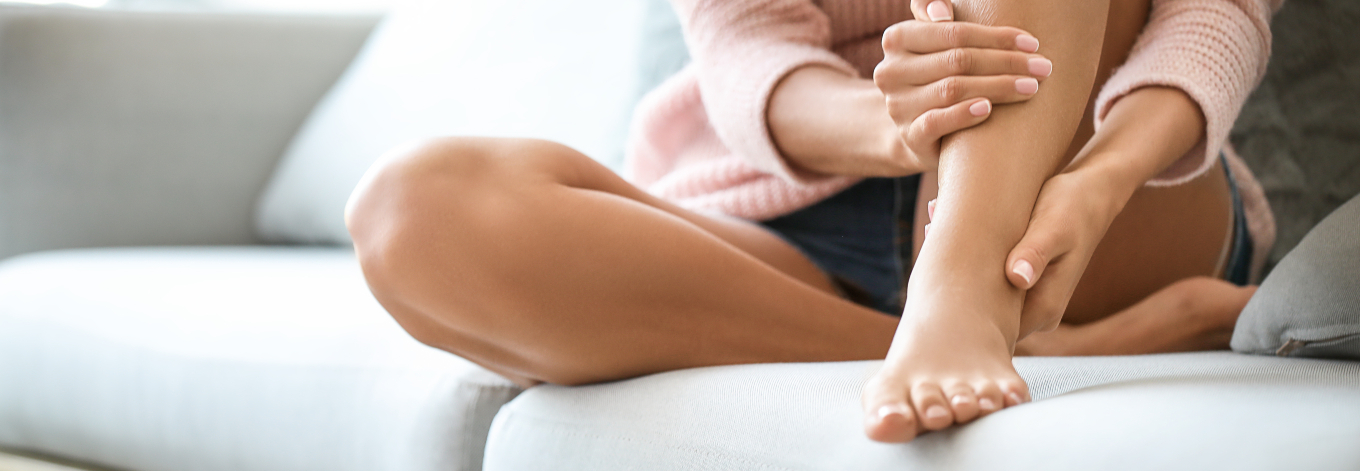
Varicose Veins in Feet and Ankles: the causes and best treatments
Varicose veins in the feet and ankles can be very debilitating for sufferers of the condition. Around 1 in 3 adults experience varicose veins at some point in their lives, and the legs are one of the most commonly affected areas. Feet varicose veins make even the easiest activities like walking or standing difficult. Sufferers are not only likely to feel negative physical side effects like pain and swelling, they are also likely to experience the unsightly cosmetic issue of twisted and bulging veins.
Thankfully, a range of treatments exist to help patients get rid of varicose veins in the feet and ankles. Here, we discuss the causes of varicose veins in the feet, before delving into the best treatments.
What causes varicose veins in the ankles and feet?
A variety of different factors, from genetics and poor nutrition to stress, lead to varicose ankle and feet veins. However, two of the most impactful reasons are gravity and weight. Varicosities frequently occur in the legs as leg veins have to work harder against the force of gravity to push blood flow towards the heart. They also support your upper body weight, which puts added pressure on the leg vein channels to regulate blood flow.
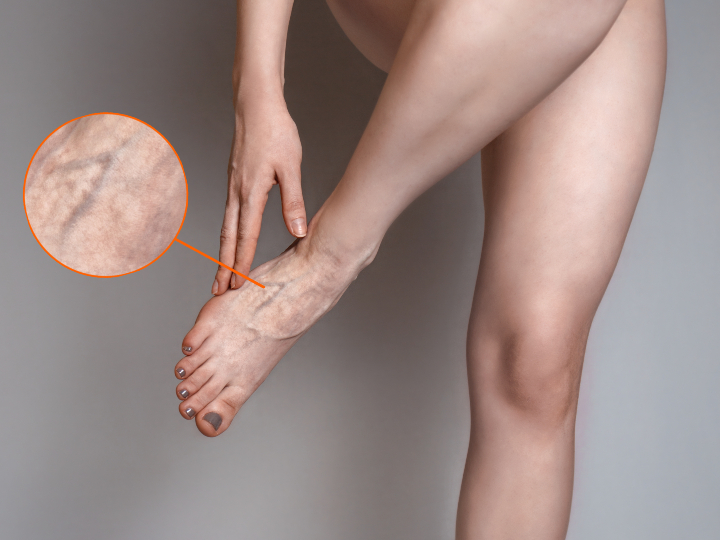
Venous reflux
If too much pressure builds up in leg vein channels, the small valves which regulate the blood flow become weak or damaged. Blood can start to flow backwards through the vein (a process called venous reflux), leading to blood pooling and collecting inside the vein itself. Bloated and discoloured varicose veins then appear as a direct result of this process.
Being overweight or obese can therefore dramatically increase the likelihood of varicose veins forming in the feet and ankles. Weakened vein valves will struggle to cope with the demands that excess body weight places on veins as they fight against gravity to push blood towards the heart.
Additional risk factors
In addition to excess weight, other risk factors for varicose leg and ankle veins include:
- High blood pressure: the condition of high blood pressure is common in obese people. It can further increase pressure on the circulatory system and veins by damaging the lining of arteries
- Poor nutrition: eating processed fats, refined sugars and excess calories can lead to weight gain, while affecting digestion. Poor digestion also reduces mineral absorption, leading to further pressure on the circulatory system
- Stress: adrenaline and histamine stress chemicals put inflammatory pressure on blood vessels. Blood also pumps more forcefully through the veins, putting further strain on vein valves and walls
- Pregnancy: during pregnancy, the body produces extra amounts of blood to support a growing foetus. Hormones like oestrogen and progesterone are produced in greater quantities at this time. This relaxes the lining of the veins and increases the chance of blood leakage
- Sedentary lifestyle: Inactivity and staying still in the same place for an extended period of time impairs circulation and leads to stagnant blood pooling and bulging in the damaged vein channels
With so many causal factors at play, it is no surprise that a vast number of people experience varicose veins in the feet and ankles at some point during their lives.
Symptoms of varicose veins in ankles and feet
Different people experience varicose leg and ankle vein symptoms in different ways. However, the common range of symptoms is common:
- Blue veins or dark purple veins
- Bulging and twisted veins that pop out in an inflamed way
- Aching in the legs, ankle and feet
- Throbbing, itching and burning sensations around the legs, ankle and feet
- Restless legs and frequent cramping issues
- Leg heaviness and fatigue
- Swollen and red veins that are tender to the touch
- Skin ulceration or rashes near the ankle – (this indicates severe venous disease)
- Breaks in the skin around the foot / ankle veins
Damaged veins in the feet and ankles can also present themselves as shallow spider veins. Spider veins are similar to varicose veins, but they are smaller and appear in a spider-web-like pattern.
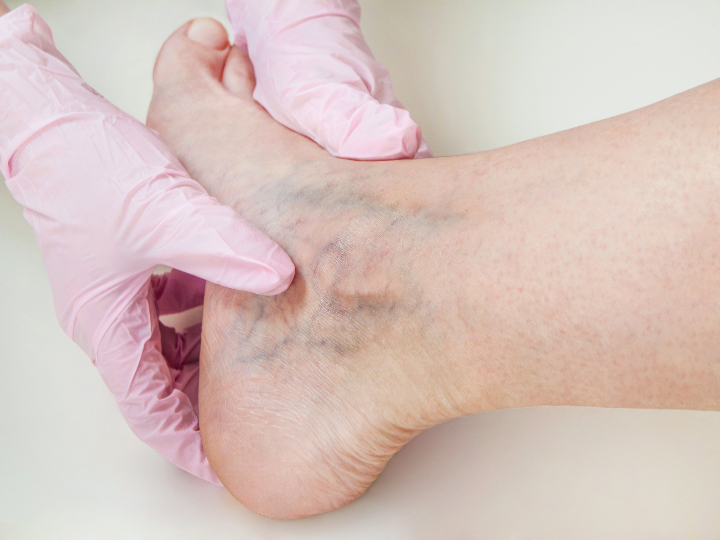
How to tell if you have feet and ankle varicose veins
In some instances, patients will be able to visibly detect the presence of vein abnormalities in their feet and ankles. Visibly large veins may bulge out across the top of the feet, or smaller thread-like spider veins may appear in a purple or blue colour. This may also be accompanied by physical swelling in the rest of the leg. Venous ulcers may also develop around the lower leg or ankle region.
In other instances, patients may show no obvious tangible signs of an abnormal vein problem. However, they may feel aching and throbbing sensations in their feet despite having no obvious physical signs.
Do ankle and foot varicose veins need to be treated?
If left untreated or undetected for too long, foot and ankle veins can cause serious problems. Issues range from venous eczema, skin discolouration, and severe ulceration to a general hardening of the ankle and lower leg. Feet and ankle veins can also cause serious and potentially life-threatening blood clots. This is why patients with suspected venous problems need to seek professional medical help as soon as they begin to notice symptoms.
How to get rid of varicose veins in feet and ankles
The best way to treat ankle and foot varicose veins is to seek out a consultation with a vascular surgeon. Our medical specialists are expertly trained in identifying venous issues and presenting the best solutions to treat them.
A central part of this consultation process is undergoing an advanced Duplex Ultrasound Scan. This gives the vascular surgeon the ability to three-dimensionally analyse your feet and ankles to detect irregular blood flow issues or vein valve damage. The scan is noted as one of the leading ways to facilitate the best varicose vein treatments, as it gives vascular surgeons the information they need to accurately assess the state of the veins and the causal issues at play. This is why the National Institute of Health and Care Excellence (NICE) has endorsed the scan as a fundamental part of gold-standard varicose vein removal treatments.
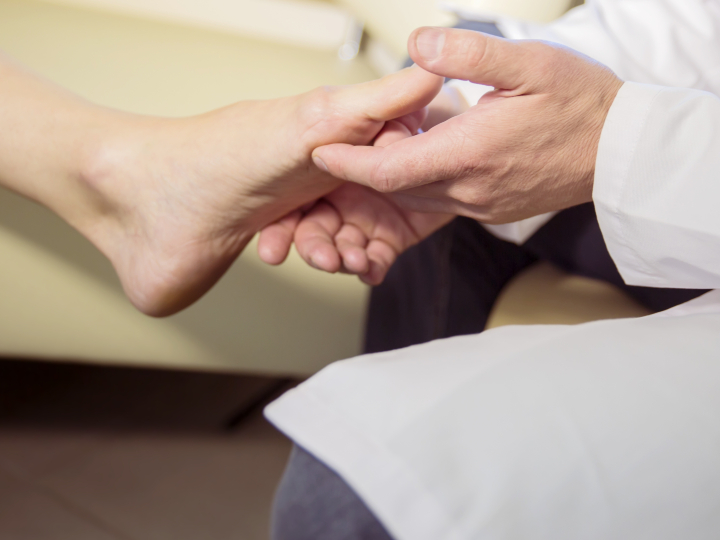
Once this scan has taken place, your vascular surgeon can identify underlying venous issues in your feet and ankles before recommending the best treatments to minimise your symptoms.
Best ankle and foot vein treatments
The best treatments for feet and leg veins work to completely remove damaged varicose vein channels from the feet and ankles. Modern treatments that do this are minimally invasive and performed on an outpatient basis, with minimal side effects and exceptional rates of success. At The Private Clinic, we offer 3 leading treatments to treat leg and ankle vein issues:
EVLA (Endovenous Laser Ablation)
EVLA is a revolutionary varicose vein treatment for the feet and ankles with a proven success rate of 98%. As one of our most popular treatments, it is recognised as the modern-day gold standard for varicose veins removal according to the National Institute for Health and Care Excellence (NICE). With a range of impressive benefits, like fast healing time and excellent long-term effectiveness, it uses laser heat energy to collapse feet and ankle veins. The ultrasound-guided laser device blasts short pulses of heat energy at the damaged varicose vein walls to break them down and close off the vein channel. Once this has occurred, blood then redirects itself through healthier surrounding channels. Visible results will show through between 4 to 6 weeks post-treatment, once the treated vein has naturally broken down.
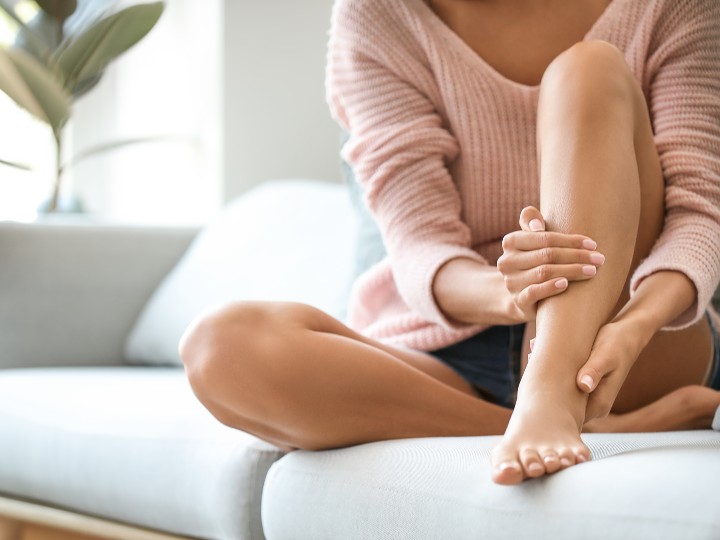
Liquid and Foam Sclerotherapy
Sclerotherapy is a specialised treatment that removes smaller varicose veins in the feet and ankles. It’s an ideal treatment of recurrent vein issues and can be completed in less than 30 minutes using a local anaesthetic. Foam Sclerotherapy uses a special medical foam called a sclerosant which has been used for many years to break down the varicose vein walls. This sticky substance is injected into the affected vein using ultrasound guidance to coat the vein walls and push out blood from the affected channel. Over time, the vein walls will naturally dissolve and disappear as the body gradually absorbs them.
Most patients experience positive results after just 3-6 weeks post-treatment, but it can take slightly longer for larger feet and ankle veins to completely disappear. The National Institute for Health and Care Excellence recommends this as the gold-standard alternative treatment if patients are not suitable for EVLA.
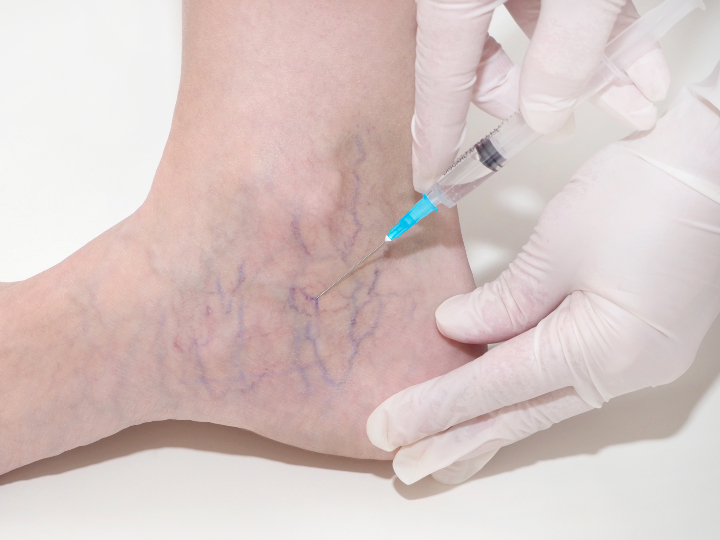
Liquid sclerotherapy (microsclerotherapy) is a similar treatment that irritates the lining of vein walls to seal it off. This method is ideal for smaller veins like spider veins that cover a smaller surface area, while foam sclerotherapy is better for slightly larger vein channels. Your vascular surgeon will advise on which treatment is best for your own needs during your consultation.
Radiofrequency Ablation
Radiofrequency ablation (RFA) is another minimally invasive treatment that treats varicose feet veins in just 30-90 minutes. Whilst foam sclerotherapy and EVLA are more popular, it is used as a vein removal treatment in special cases. It uses thermal heat-based energy to damage the walls of the affected varicose veins. This causes them to completely close up with scar tissue. As a result, blood will no longer be able to pool and bulge inside the treated varicose vein channel. After a few weeks, the vein channel itself will be completely broken down and naturally absorbed by the body. Patients are likely to see noticeable improvements in just a matter of weeks.
Treating Ankle and Feet Varicose Veins at The Private Clinic
At The Private Clinic, we have been carrying out vein removal procedures in the ankles and feet for over 40 years. As a multi-award-winning treatment practice, we have a reputation for excellent long-term patient results, as seen in our 5-Star Trustpilot rating. Every year, our trained vascular surgeons carry out over 7,000 procedures, so you will benefit from being treated by experienced professionals who have been instrumental in developing the best procedures.
- The least invasive method for varicose veins and thread veins removal treatment for your legs, body and face.
- Our Consultant vascular surgeons are pioneers in EVLA(Endovenous Laser Ablation) and have treated thousands of patients.
- No lengthy downtime or recovery required.
- The NICE (National Institute for Clinical Excellence) Gold Standard for treatment of Varicose Veins findings show that the success rate after five years for EVLA is 95.4%.
- A consultation with one of our Consultant Vascular Surgeons costs £200, including a free ultrasound scan of your legs (usually priced between £350 and £450 at most clinics and private hospitals).
- We work with our partnered finance provider ‘Chrysalis Finance’ to offer 0% finance* to our patients. Get in touch to find out more.
- We focus on the underlying cause of your veins and you will only see a Consultant Vascular surgeon for varicose veins.
- We have treated thousands of patients who have regained their confidence whilst avoiding health issues.
- Treatment takes one hour, you can go home shortly after being treated.
- Owing to our success, we have been featured in Harper’s Bazaar’s Cosmetic Tweakment Trends.
- We have carried out over 7,000 procedures in treating Veins.
Useful Links
- View our varicose vein before and after photos.
- Read our extensive varicose vein FAQs.
- Take a look at our varicose vein patient stories.
- Find out more in our varicose vein blogs.
- Download our varicose veins treatment brochure.
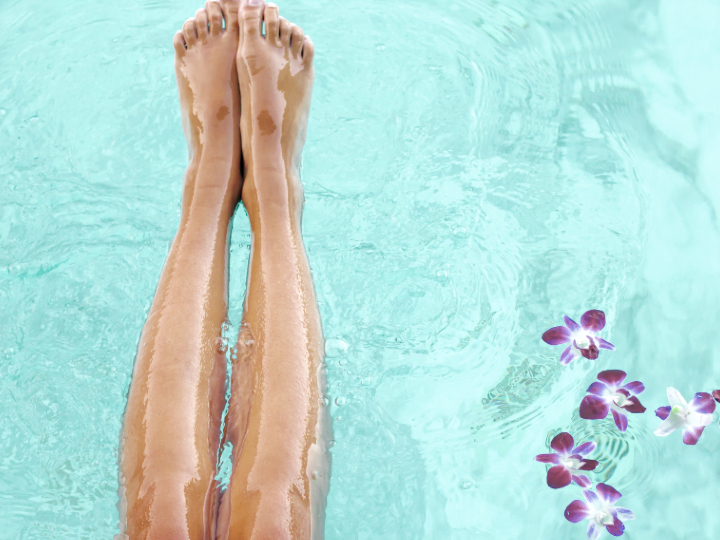
Get in touch
To find out more about our ankle and foot vein treatments, complete our online varicose vein enquiry form to arrange a consultation. You can also call us directly on 0333 920 2471 and we will be happy to help.
We have state-of-the-art treatment clinics in convenient nationwide locations including London Harley Street, Birmingham, Bournemouth, Leeds, Manchester, and Northampton.





